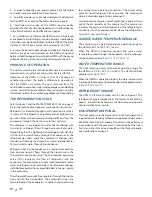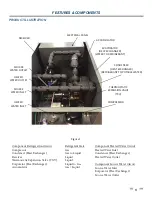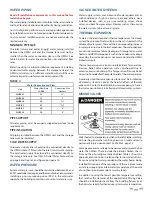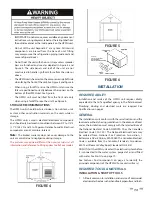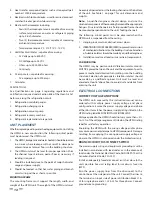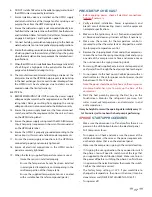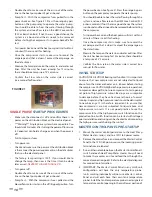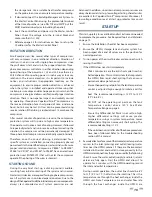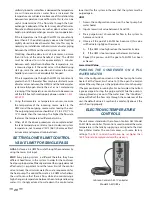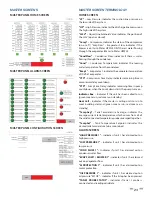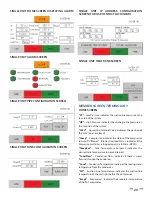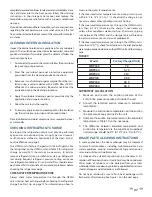
13
•
IMPORTANT: Do not remove, cover or deface any permanent
instructions, wiring diagrams, labels, or the rating label from
the outside cabinet or the inside panels on the HPWH unit.
•
Do not tilt the unit beyond 45° at any time. All internal
components are braced from the base of unit. Tilting
may compromise the refrigeration piping inside unit and
cause refrigerant leaks.
•
Do not hoist the unit with chains or straps unless spreader
bars are furnished and used as depicted in Figure 4 and
Figure 5. The side panels and roof of the unit are not
constructed to handle signifi cant force from the sides or
above.
•
The HPWH unit is heaviest on the compressor side (left side
when facing the front of the unit). See Figure 4 and Figure 6.
•
When using a forklift to raise the HPWH unit ensure the
forks are positioned correctly between the runners on the
bottom of the HPWH unit. See Figure 6.
•
The HPWH unit must be lifted from the front side only
when using a forklift to raise the unit. See Figure 6.
STORAGE RECOMMENDATIONS
The HPWH units should be stored indoors. Do not stack units
or stack other construction materials on the units while in
storage.
The HPWH units contain electrical/electronic components
and should only be stored in conditions between 0ºF to 110°F
(-17°C to 43°C) and 5 to 95 percent relative humidity. Electrical
components are not moisture-tolerant.
Note:
The limited warranty does not cover damage to the
unit or controls due to negligence during storage.
The pictures may appear different than your actual unit. all
information and reference to lifting applies to all of our models
FIGURE 4
FIGURE 5
FIGURE 6
REQUIRED ABILITY
Installation and service of the HPWH unit requires ability
equivalent to that of a qualifi ed agency in the fi eld involved.
Plumbing, ducting and electrical work are required. See
Qualifi cations on page 3.
GENERAL
The installation must conform with these instructions and the
local code authority having jurisdiction. In the absence of local
codes, the installation must comply with the latest editions of
the National Electrical Code, ANSI/NFPA 70 or the Canadian
Electrical Code CSA C22.1. The National Electrical Code may
be ordered from: National Fire Protection Association, 1
Batterymarch Park, Quincy, MA 02269. The Canadian Electrical
Code is available from the Canadian Standards Association,
8501 East Pleasant Valley Road, Cleveland, OH 44131.
DO NOT start the HPWH unit or test the electrical system before
it is connected to the water system, purged of air and fi lled
with water. See Start Up on page 19.
See Features And Components on page 5 to identify the
principal components of the HPWH. (Some units will vary)
REQUIRED TOOLS & MATERIALS
INSTALLATION & START UP TOOLS
1. All tools common to installation and service of commercial
electric water heaters such as hand tools, pipe cutter and torch.
INSTALLATION
Summary of Contents for HS 50 Series 100
Page 2: ......
Page 10: ...6 WATER TO WATER CYCLE ...
Page 32: ...28 TABLE 10 FIGURE 12 ...
Page 41: ...37 Technical Support 1 833 447 3201 ...
Page 42: ...38 Service Log Issue Description Date Servicer ...
Page 43: ...39 Service Log Issue Description Date Servicer ...
Page 44: ......






